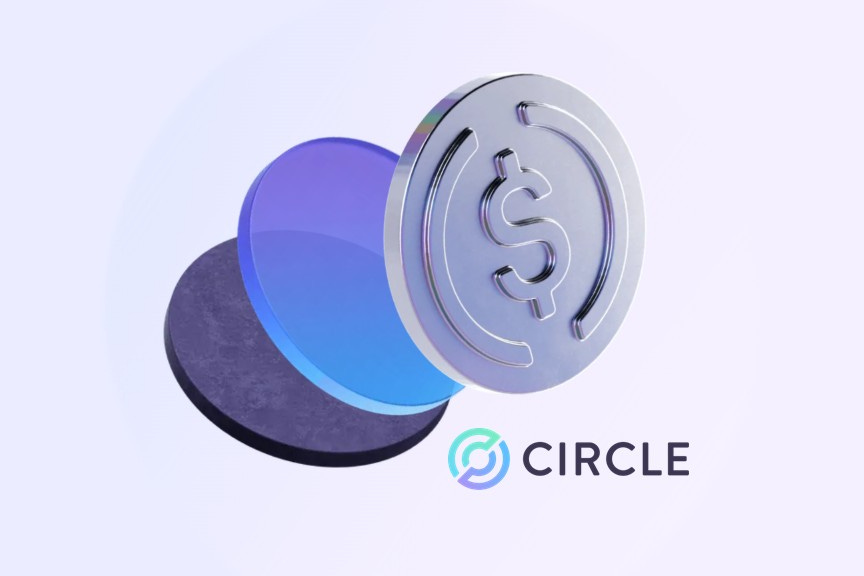On April 21, 2025, Circle launches new payments and cross-border remittance network, a transformative step for the stablecoin issuer behind the $60 billion USDC. Unveiled from its New York City headquarters on the 87th floor of One World Trade Center, the Circle Payments Network (CPN) aims to streamline global money movement for banks, fintechs, payment service providers, and remittance firms. Led by CEO Jeremy Allaire, Circle positions this network to rival giants like Mastercard and Visa, leveraging USDC and EURC for real-time settlements. This article explores how Circle launches new payments, its impact, and the opportunities and challenges ahead.
How Circle Launches New Payments Network

When Circle launches new payments, it introduces the CPN, designed to connect financial institutions and technology firms for seamless cross-border transactions. Announced on April 21, 2025, the network enables 24/7 real-time settlements using regulated stablecoins like USDC and EURC. The launch event, hosted at Circle’s headquarters, targeted USDC strategic partners, showcasing Allaire’s vision for a blockchain-powered payment system.
The CPN supports use cases such as supplier payments, remittances, payroll, capital markets settlement, and on-chain financial applications. By integrating with domestic real-time payment systems worldwide, Circle ensures efficient global fund flows. This move marks a return to Circle’s roots as a payments company, building on its success with USDC, the second-largest stablecoin after Tether’s USDT. Industry discussions highlight Circle’s ambition to disrupt traditional banking systems with stablecoin technology.
Implications of Circle Launches New Payments
The announcement that Circle launches new payments has significant implications for the crypto and fintech sectors. Stablecoins have reached an adoption level where they could transform global money transfers, similar to how WhatsApp disrupted international calls, according to a recent Andreessen Horowitz report. Circle’s network, initially targeting remittances, aims to challenge Mastercard and Visa by offering faster, cheaper transactions. This aligns with Circle’s $1.7 billion reserve income in 2024, primarily from USDC operations, signaling financial strength.
Circle launches new payments also benefits from evolving regulations, such as the EU’s MiCA framework, which supports stablecoin adoption. The network’s focus on real-time settlements could attract banks and fintechs, especially in regions like Japan, where digital payments are growing. However, Circle must navigate competition from Tether, whose USDT dominates the stablecoin market, and new entrants like PayPal’s PYUSD.
Opportunities for Financial Institutions
When Circle launches new payments, it creates opportunities for financial institutions and businesses. The CPN enables real-time cross-border payments, reducing costs and delays compared to traditional bank transfers. Fintechs like Stripe, which recently integrated USDC on Aptos, could leverage Circle’s network for global payments, enhancing merchant and consumer access. Remittance providers in developing countries, where stablecoins are used for financial inclusion, stand to benefit significantly.
Circle’s Cross-Chain Transfer Protocol (CCTP), now supporting 19 blockchains, facilitates seamless USDC transfers, boosting DeFi and Web3 applications. Investors may see Circle’s upcoming IPO on the New York Stock Exchange under CRCL as a chance to back a leader in stablecoin innovation, especially after its $1.2 billion in venture funding from firms like Goldman Sachs.
Challenges for Circle’s Payments Network

Despite the promise of Circle launches new payments, challenges loom. Market volatility, as seen in Bitcoin’s fluctuations amid U.S.-China trade tensions, could affect stablecoin adoption. Circle’s postponed IPO due to uncertain market conditions highlights financial risks. Competition from Tether and emerging stablecoins like USDG, backed by Robinhood and Kraken, poses a threat to USDC’s market share.
Regulatory scrutiny remains a hurdle, with U.S. Congress still debating stablecoin rules. Circle’s refund protocol for reversible payments addresses one adoption barrier, but global compliance with frameworks like MiCA requires ongoing effort. Technical challenges, such as ensuring network scalability and security, are critical to maintaining trust among banks and fintechs.
Looking Ahead
As Circle launches new payments, the CPN positions Circle as a leader in blockchain-based payments. Set to roll out in May 2025, the network could redefine cross-border transactions, rivaling traditional payment systems. Circle’s integration with blockchains like Stellar and Aptos for USDC and EURC enhances its global reach, supporting use cases from remittances to treasury management.
Investors and businesses should monitor Circle’s progress, particularly its IPO and regulatory developments. With stablecoins gaining traction globally, Circle launches new payments signals a shift toward a blockchain-driven financial system, promising efficiency and accessibility for billions.

